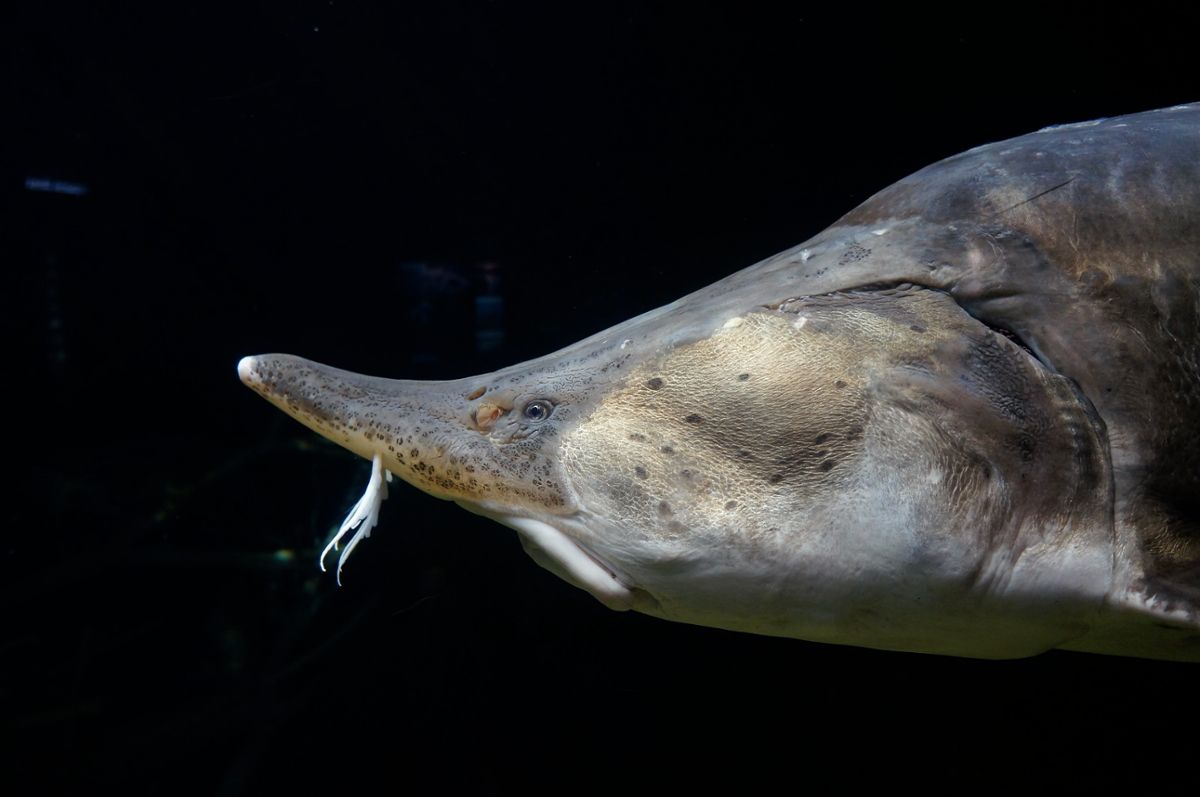If you want a piece of living history, where would you look? You could visit California’s giant redwoods, or simply watch the birds, those descendants of dinosaurs. But consider, instead, the humble sturgeon.
Though this simple fish might not have the grace of redwoods, it does lay claim to the distant past. Fossils from the Middle Jurassic suggest the sturgeon evolved between 150 to 200 million years ago—and it hasn’t changed much since. They look ancient, too, with smooth skin punctuated by rows of pointy plates, instead of scales, down their body. With a skeleton made mostly of cartilage, these plates are their primary bones! Their pointy snouts, dorsal fins, and forked tails add to the effect, making sturgeons resemble that other ancient fish, the shark.
The sturgeon can also represent living history simply because of its lifespan. “Sturgeon” is the common name for nearly 30 species; some species live only a couple decades, while others live three times as long. A very few make it well past 100. Since sturgeons never stop growing, the oldest get massive: the aptly named beluga sturgeon might indeed remind you of a whale, as an elderly one can measure 26 feet long and weigh several thousand pounds. Such sturgeon, however, are incredibly rare.
Here’s a final connection to history: in the twentieth century, sturgeon were common in the US, a popular meal or source of caviar. In fact, sturgeon were common around the world, living in lakes, rivers, estuaries, and oceans across the northern hemisphere. Today, the story is different: sturgeons are critically endangered thanks to overfishing, habitat destruction, and loss of spawning areas.










